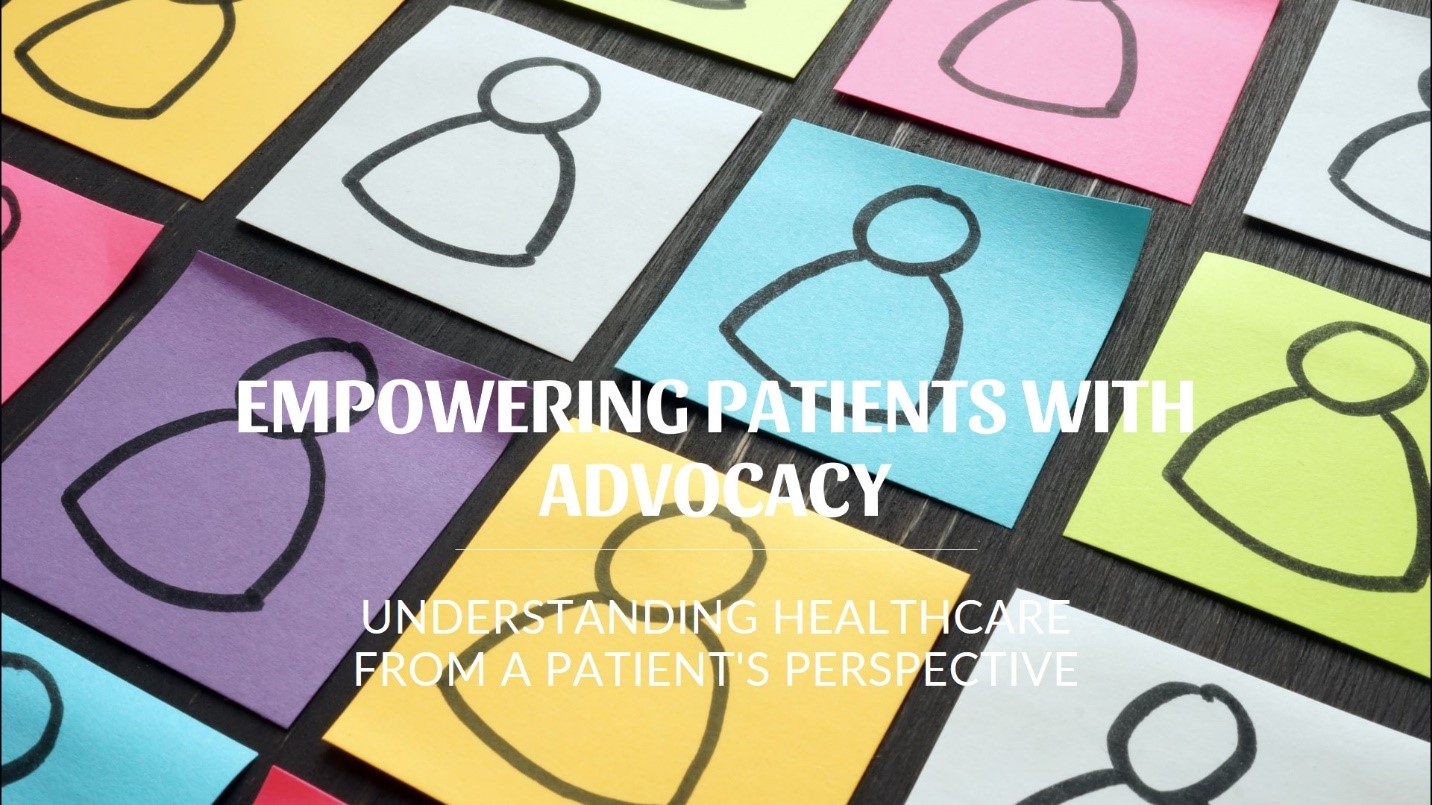Empowering Patients With Advocay

Healthcare navigation for a patient typically involves several key aspects designed to help them manage and understand their healthcare journey effectively. Here’s a breakdown of what it usually looks like:
- Access to Care
- Primary Care Provider (PCP): The patient starts with a PCP who coordinates their care and serves as their main point of contact.
- Referrals: The PCP may refer the patient to specialists as needed.
- Appointment Scheduling
- Ease of Booking: Patients should have access to user-friendly systems for scheduling appointments, whether online, via phone, or in person.
- Reminder Systems: Automated reminders for upcoming appointments to reduce missed visits.
- Information and Education
- Patient Portals: Online portals where patients can access their medical records, test results, and educational materials.
- Educational Resources: Brochures, videos, and classes that help patients understand their conditions and treatments.
- Coordination of Care
- Care Teams: A coordinated approach involving doctors, nurses, specialists, and other healthcare professionals who communicate effectively with each other.
- Care Plans: Personalized care plans that outline the patient’s treatment and follow-up care.
- Support Services
- Nurse Navigators: Nurses who help guide patients through the healthcare system, ensuring they receive timely care and understand their treatment plans.
- Social Workers: Assistance with social, emotional, and financial aspects of care.
- Financial Navigation
- Insurance Guidance: Help with understanding insurance coverage, co-pays, and out-of-pocket expenses.
- Billing Assistance: Clear explanations of bills and support in resolving billing issues.
- Communication
- Open Lines: Easy access to healthcare providers for questions and concerns, including after-hours support.
- Clear Explanations: Ensuring patients understand their diagnoses, treatment options, and any necessary follow-up.
- Follow-Up and Monitoring
- Post-Visit Care: Instructions for care at home and follow-up appointments to monitor progress.
- Remote Monitoring: Technologies that allow patients to track their health and share data with their healthcare providers.
- Patient Advocacy
- Support Groups: Access to groups for patients with similar conditions for emotional support and shared experiences.
- Advocates: Professionals who help patients navigate complex healthcare decisions and systems.
- Feedback Mechanisms
- Surveys: Opportunities for patients to provide feedback on their care experience to help improve services.
- Patient Advisory Councils: Groups of patients who advise healthcare organizations on patient-centered care improvements.
Effective healthcare navigation ensures that patients receive comprehensive, coordinated, and compassionate care tailored to their individual needs.
When there is a breakdown in healthcare navigation, it can have serious consequences for patients, affecting their health outcomes, satisfaction with care, and overall experience within the healthcare system. Here are some potential issues and consequences that can arise:
- Missed Appointments and Follow-Ups
- Consequences: Patients may miss important appointments or follow-up visits, leading to delays in diagnosis, treatment, and monitoring of chronic conditions.
- Impact: This can result in worsened health conditions and increased need for emergency care.
- Miscommunication
- Consequences: Misunderstandings or lack of clear communication between patients and healthcare providers can lead to confusion about treatment plans, medications, and care instructions.
- Impact: Patients may not adhere to their prescribed treatments properly, leading to ineffective care and potential health complications.
- Fragmented Care
- Consequences: Lack of coordination among different healthcare providers can lead to fragmented care, where different aspects of a patient’s health are not addressed in a cohesive manner.
- Impact: This can result in redundant tests, conflicting treatments, and gaps in care, reducing the overall quality of healthcare.
- Insurance and Financial Issues
- Consequences: Patients may struggle to understand their insurance coverage, leading to unexpected medical bills and financial stress.
- Impact: Financial burdens can deter patients from seeking necessary care, exacerbating health problems.
- Inadequate Support Services
- Consequences: Patients may lack access to necessary support services, such as nurse navigators or social workers, who help manage their healthcare journey.
- Impact: Without adequate support, patients can feel overwhelmed and unsupported, leading to increased anxiety and decreased satisfaction with their care.
- Delays in Care
- Consequences: Inefficient scheduling and referral processes can cause delays in accessing specialists and receiving timely treatment.
- Impact: Delayed care can lead to disease progression and reduced chances of successful outcomes.
- Inaccurate or Incomplete Medical Records
- Consequences: Errors or gaps in medical records can result in incorrect diagnoses, inappropriate treatments, and overlooked allergies or interactions.
- Impact: This can compromise patient safety and lead to adverse health events.
- Reduced Patient Engagement
- Consequences: Patients who feel disconnected or uninformed about their care may become disengaged from their healthcare.
- Impact: Lower engagement can result in poor adherence to treatment plans and preventive measures, negatively impacting health outcomes.
- Increased Stress and Anxiety
- Consequences: Navigating the healthcare system without proper guidance can be stressful and anxiety-inducing for patients.
- Impact: Increased stress can have negative effects on overall health and well-being.
- Decreased Patient Satisfaction
- Consequences: Patients who experience navigation breakdowns are likely to have lower satisfaction with their healthcare experience.
- Impact: This can lead to lower trust in healthcare providers and systems, reducing the likelihood of patients seeking care when needed.
Addressing Breakdown in Navigation
Healthcare organizations can implement several strategies to address and prevent breakdowns in navigation:
- Improved Communication: Ensuring clear and consistent communication between patients and healthcare providers.
- Integrated Care Teams: Promoting collaboration among healthcare providers to coordinate and streamline patient care.
- Patient Education: Providing resources and support to help patients understand their health conditions and navigate the healthcare system.
- Support Services: Offering access to nurse navigators, social workers, and patient advocates to assist patients in their healthcare journey.
- Efficient Systems: Implementing user-friendly scheduling, referral, and record-keeping systems to reduce delays and errors.
- Feedback Mechanisms: Collecting and acting on patient feedback to continuously improve the navigation process.
Hiring an independent patient advocate can provide significant value in instances where there is a breakdown in healthcare navigation. Here are several key benefits:
- Personalized Support and Guidance
- Comprehensive Assistance: Independent patient advocates offer personalized support tailored to the patient’s specific needs, helping them navigate the complexities of the healthcare system.
- Education: They provide clear explanations about diagnoses, treatment options, and medical terminology, ensuring patients understand their health situations and can make informed decisions.
- Coordination of Care
- Streamlined Communication: Advocates facilitate communication between various healthcare providers, ensuring that all parties are informed and on the same page regarding the patient’s care plan.
- Avoiding Fragmentation: They help to coordinate appointments, tests, and treatments, reducing the risk of fragmented care and ensuring that all aspects of the patient’s health are addressed cohesively.
- Support During Medical Appointments
- Preparation: Advocates assist patients in preparing for medical appointments by compiling questions and concerns to discuss with healthcare providers.
- Accompaniment: They can accompany patients to appointments, providing support, taking notes, and ensuring that important information is communicated effectively.
- Insurance and Financial Assistance
- Navigating Insurance: Advocates help patients understand their insurance policies, coverage options, and benefits, and assist in resolving any insurance-related issues.
- Billing Issues: They provide support in deciphering medical bills, disputing errors, and negotiating payment plans, alleviating financial stress for patients.
- Emotional and Social Support
- Empathy and Understanding: Independent advocates offer emotional support, helping patients cope with anxiety and stress related to their health conditions and healthcare experiences.
- Access to Resources: They connect patients with additional resources, such as support groups, counseling services, and community programs.
- Advocacy and Empowerment
- Patient Rights: Advocates ensure that patients’ rights are respected and upheld, helping them to voice their concerns and preferences in their care.
- Empowerment: By educating and supporting patients, advocates empower them to take an active role in their healthcare decisions and improve their overall sense of control and confidence.
- Crisis Management
- Handling Emergencies: In times of crisis or sudden health changes, advocates provide immediate support and guidance, helping patients navigate urgent care needs and making critical decisions.
- Long-term Planning: They assist in developing long-term care plans, including advance directives and end-of-life planning, to ensure that patients’ wishes are honored.
- Improving Health Outcomes
- Adherence to Treatment: Advocates help ensure that patients follow through with prescribed treatments and care plans, leading to better health outcomes.
- Preventing Complications: By closely monitoring and coordinating care, advocates help prevent complications and reduce the likelihood of hospital readmissions.
- Enhanced Patient Satisfaction
- Positive Experience: With the support of an advocate, patients often experience higher satisfaction with their healthcare journey, as they feel more understood, supported, and confident in their care.
- Building Trust: Independent advocates help build trust between patients and the healthcare system, fostering a more collaborative and positive relationship.
- Objectivity and Independence
- Unbiased Support: Unlike hospital-employed navigators or case managers, independent patient advocates work solely for the patient, offering unbiased support and prioritizing the patient’s best interests without conflicts of interest.
Overall, an independent patient advocate serves as a crucial ally in the healthcare journey, especially when there are breakdowns in navigation, by providing comprehensive, personalized, and unbiased support that enhances the patient’s experience and outcomes.
